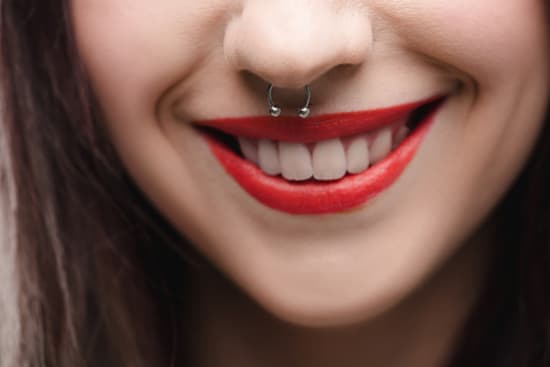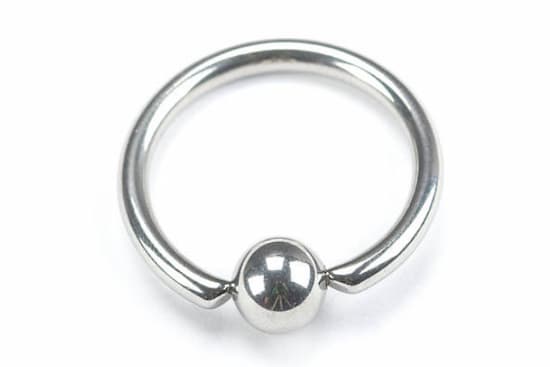Infected nose piercing is a common condition that occurs if the procedure was poorly conducted or improper management by the individual who received the piercing. However, do not panic if ever you notice intolerable discomfort or bumps around the nose area. Such conditions are preventable and highly treatable in case that they indeed happen. For today’s article, I will provide some basic information about the nose piercing infection, such as facts and causes and how to remedy the condition and boost the healing process. So without any further delays, let’s begin…

It’s normal to have soreness and minor irritations around your nose after the piercing procedure. The discomfort could last for a few weeks, but it may take six months before your skin fully recovers and adapt to the foreign object pierced into your nose. However, an infected nose piercing may likely take place if the piercer poorly conducted the procedure, or the individual who received the procedure wasn’t able to observe proper care within the recuperating period that resulted in the inflammation. The signs of infected nose piercing include bumps, swelling, throbbing pain, discoloration, and tenderness around the nose area.
In some serious cases, a piercing infection may also lead to wounding that ejects yellowish or greenish ooze, emitting unpleasant odors. If such events happen, it is highly recommendable that you seek immediate medical attention. The medical practitioner will examine the scope of the wounding and nose piercing pustule. Afterward, they’ll give you medical advice on what you should do next, and then antibiotics for nose piercing infection will also be prescribed to prevent its spread and relieve you from pain.
There’s a variety of factors that leads to an infected nose piercing, and it includes the following—
·The most common cause is an infection which is due to the way the procedure was conducted. If the materials or equipment used or facility is unsanitary, then an infection would likely occur
·Also, an infection would arise if proper care was not observed during the healing process by the person who received the piercing procedure
·Tissue damage would also likely lead to an infected nose bump. This condition happened when the ring was removed prematurely or the foreign object was removed by accident (Check how to remove the nose ring safely.)
·Allergic reaction to the accessory or jewelry used
·The occurrence of a keloid—a type of raised scar
·Amounts of fluids were trapped under the skin during the procedure that caused the bumps or lumps
·It is also likely caused by an inflamed tissue called a granuloma. This type of condition causes raised skin or bumps
Keloid, in particular, is a skin condition that causes a dark lump. The usual symptoms include irritation, tenderness, and aching when you touch the bumps. And if Keloid is diagnosed, then you have to consult your local physician or licensed dermatologist immediately.

There are specific initial treatments that you can perform at home if you surmise that your condition is still perfectly well. Here are five tips on how to heal a nose piercing fast—
Be Selective in Your Jewelry Piece
Not all jewelry items and accessories are suitable for all skin types. This is especially true with alloys that are admixed with several elemental compounds. If you are not aware of your condition and have chosen the wrong jewelry ware, then a nose piercing infection is very likely to develop. Consult a dermatologist in order to determine your skin type and know which accessory fits you.
Chamomile Compress
A popular way to treat nose ring infections is to apply a chamomile compress on the infected area. Follow to simple steps to make a chamomile compress and aid faster recovery—
·Get yourself a chamomile tea bag and put them in a cup. It’s similar to when you’re just preparing a tea
·Allow three to five minutes for the tea bags to steep
·And then, soak a piece of small clothing in the teacup
·Place the cloth onto the inflamed area for five to ten minutes
·It is important to retain the warmth of the clothing. Therefore, soak them once every two minutes
However, chamomile compression may not be recommendable if the individual is experiencing a ragweed allergy.
Proper Hygiene
The most basic way in treating infected nose piercing is to be more hygienic and proper cleaning of the wounds at least two to three times a day. By doing so, you eliminate germs and bacteria that may potentially worsen the condition. Refer to the guidelines provided by your piercer to know how to properly clean, or ask them directly if they haven’t provided you any information about the matter.
Tea Tree Essential Oil Solution
Tea tree extracts are rich in antimicrobial, antifungal, and antiseptic. As you see—applying them to the area of injury may neutralize the symptoms of piercing infections faster and effectively. It may dehydrate the fluids inside the lumps and prevent the further spread of the inflammation.
Sea Salt Soak Solution
Last but not least is to clean the infected area with a sea salt soak solution. Follow these simple steps to make a sea salt soak solution—
·Solute ¼ of non-iodized sea salt in an eight-ounce warm water
·Get a paper towel and soak it into the salt solution
·Perform a hot compress by applying the wet paper onto the individuals’ nose. What basically happens here is that it softens the hardened scabs around the piercing. Expect a stinging or burning sensation once applied
·Reapply every two minutes to maintain the warmth of the compress. Remember to get a new paper towel every reapplication
·Afterward, get a cotton bud and soak them in the solution as well. And then, remove the crust using the cotton buds
·You may use another piece of paper towel and soak it to the solution. And then, squeeze the paper towel on top of your nose to rinse off the remaining scabs
Do this process at least two or three times daily in addition to your hygiene routine.
As mentioned earlier, the most effective way to prevent nose ring infection is proper hygiene and cleaning of the punctured area. Wash your hands whenever you need to touch the piercing or injured skin to avoid contamination. Also, some forms of infections can be prevented upon the proper observance of the guidelines provided by your piercer.
Speaking of the piercer, it is very important that you choose highly credible specialists. Check their facilities whenever possible. Be sure that area of the procedure is organized and sanitized. Lastly, refrain from touching or playing with the jewelry or nose ring because doing so may lead to inflammation or irritation.
The first person you should see if you’re the condition didn’t improve or worsen instead of getting better is the person who performed the piercing. As mentioned, the pain and soreness should go away in just a few weeks after the procedure, and if you continue to experience them for a month now, then that is the best time to visit your piercer and ask for advice on how to manage your condition.
As discussed earlier, soreness and irritation during the few weeks of the procedure are normal. But if infected nose piercing didn’t improve within the expected recovery period, or the condition gets even worse. As mentioned, you may go to your piercer first if you started to experience uneasiness and observed that the punctured area isn’t showing signs of improvement. Also, give the specialists’ advice a second look if you are indeed following them. But you may consult directly with a medical practitioner if the following symptoms start to occur—
·Intense throbbing pain
·Burning sensation, redness, or inflammation
·Fever
·Nausea
·A discharge of yellowish or greenish ooze around the wound that emits an unpleasant odor
An improvement before and after infected nose piercing should be observed after consulting with a physician. During the recovery period, you can follow the guidelines that were laid out in the previous section of the article. Although it may not have a solid scientific foundation of whether it would work, it may somehow boost and speed up the healing process. Or, you may ask your doctor for additional advice for home remedies. If there’s no improvement, then you may go back to the practitioner so they can re-evaluate your condition and provide medical advice on your infected nose piercing.
Here are some of the frequent asked questions about infected nose piercing—
Infected nose piercing is highly preventable when proper hygiene and management are exercised. However, it could lead to serious infections if it weren’t properly managed. Also, the nose is prone to the development of infection since it is often exposed to bacteria and germs.
The recommended cleaning process is two to three times a day until the piercing has fully recovered.
The primary sign of determining whether your body is rejecting the jewelry or accessory is when it leads to irritations and inflammations when you wear them. Contact your local dermatologist to know more about your skin type and potential allergies.
An infected nipple piercing is a common occurrence if proper care wasn’t observed. Fortunately, it’s highly treatable and preventable.
Read MoreSo how to wear statement necklace properly? In this article, I will provide you with the answers on its basics and the proper way of wearing them.
Read MoreHow to wear long necklaces? In today’s topic, I have prepared a list of the common necklaces and how you can properly wear them.
Read MoreSo how to wear bracelets for guys to become the center of attraction? In this article, I’ll provide you with all the essential information you need.
Read More